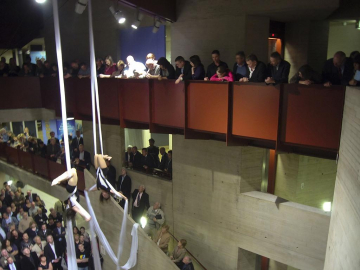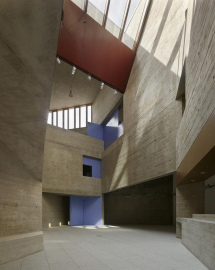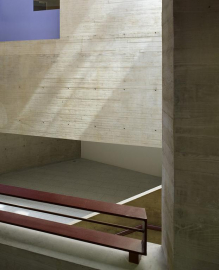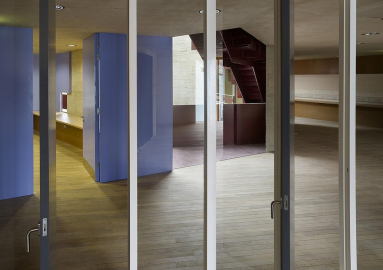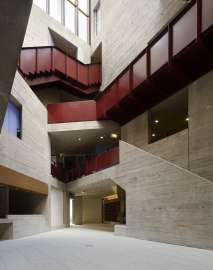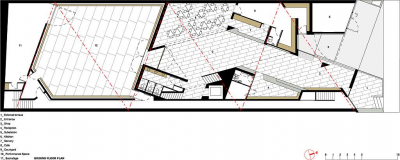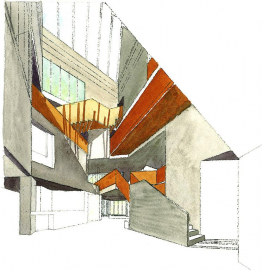Irish Language Arts and Cultural Centre
An Gaelaras is an Irish Language Cultural Centre in the city of Derry, a community cultural resource centre established for the preservation and promotion of the Irish language within Derry and the surrounding areas. The brief included shop, café, performance space, back stage facilities, start up offices, teaching spaces and offices.
An Gaelaras is an Irish Language Cultural Centre in the city of Derry, a community cultural resource centre established for the preservation and promotion of the Irish language within Derry and the surrounding areas. The brief included shop, café, performance space, back stage facilities, start up offices, teaching spaces and offices.
The site is a long rectangular plot, with a 15m public street frontage facing onto Great James Street and three other sides built up against boundary wall. An existing substation was to be relocated on the site to allow access from the street, occupying one third of the ground floor front façade. The façade reflects the established vertical proportions of the historic town houses in the area. The 75mm timber boards used to make the formwork for the concrete refer to the dimensions of traditional brick coursing visible along the street.
The design develops the public interface of the project, extending the pavement into the building and gathering various functions around a courtyard at the heart of the scheme. The building is an open house for Irish culture, with windows overlooking street and courtyard. Although the site is tightly contained by blind boundaries, the design seeks to open up the interior of the plot to daylight, maximising the potential for visual interaction with the street and exploiting available views to the city walls. The emphasis is on natural light, materials and ventilation, with internal courtyards and roof gardens giving identity and character. The idea is to create an interactive place for performance, learning, cultural activity and work.
An Gaeláras is designed for public life and community involvement. Its inwardness is not an anti-social reaction or a defensive strategy. The intention is to enhance the appropriation of collective space by locating the focus of the architectural project within the organism of the building, to find home territory embodied inside the experience of the structure. A continuous terrazzo floor connects the footpath to the building interior, minimising the barrier between outside and in. The central court is like an outside room locked within the form.
A concrete courtyard is carved through the four floors, with stairs, bridges and platforms crossing and overlooking the skylit volume. Each floor level is associated with one of the functions of the Irish language institute; culture, enterprise, teaching, and administration. The site prevented any light or view from three party walls but light spills into the central court through the inverted rooflight, and the functions of each floorplate are made legible by the overlapping geometries of the structure.
Environmental aspects include a natural ventilation system combined with passive measures such as high thermal mass and insulation. These result in low energy consumption, reduced CO2 emissions and low annual heating bills.
The street façade and internal courtyard structure are boardmarked concrete, cast against a formwork of horizontal timber boards. Walkways, stairs, balustrades and handrails are painted steel.

